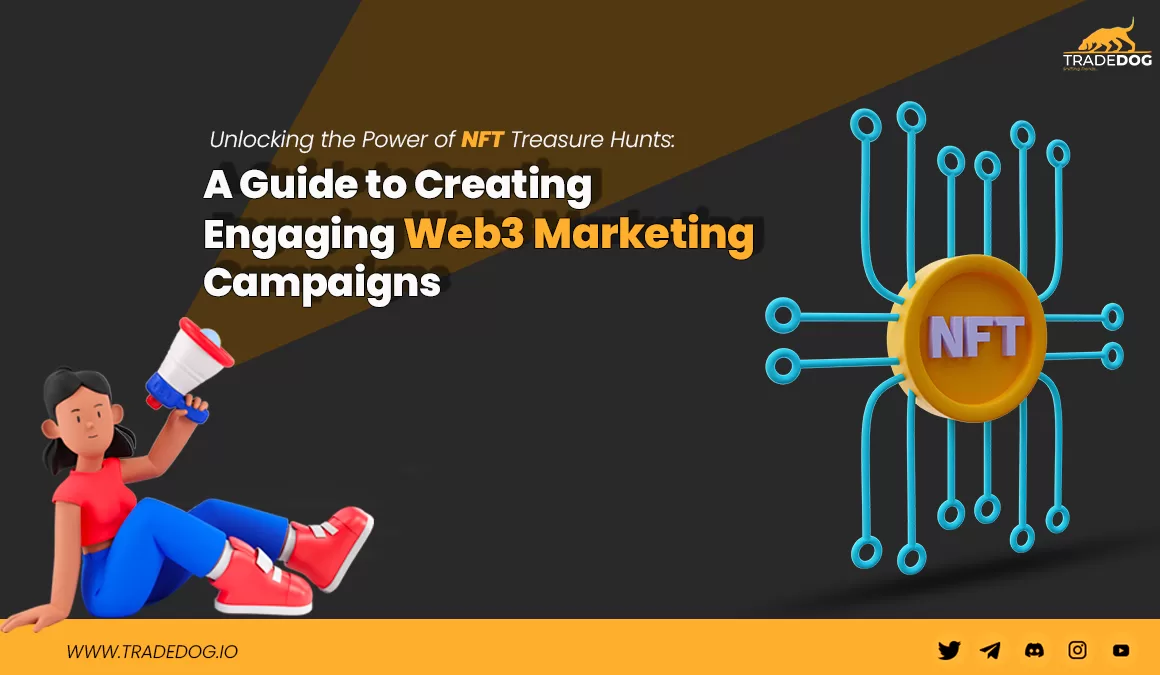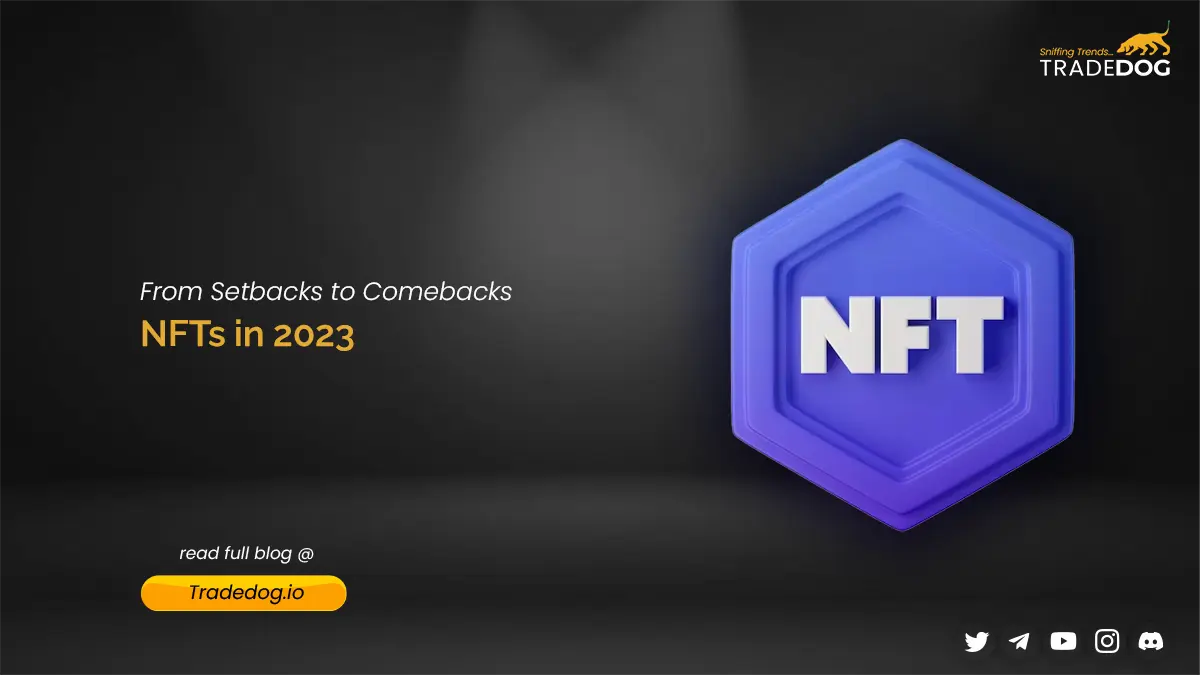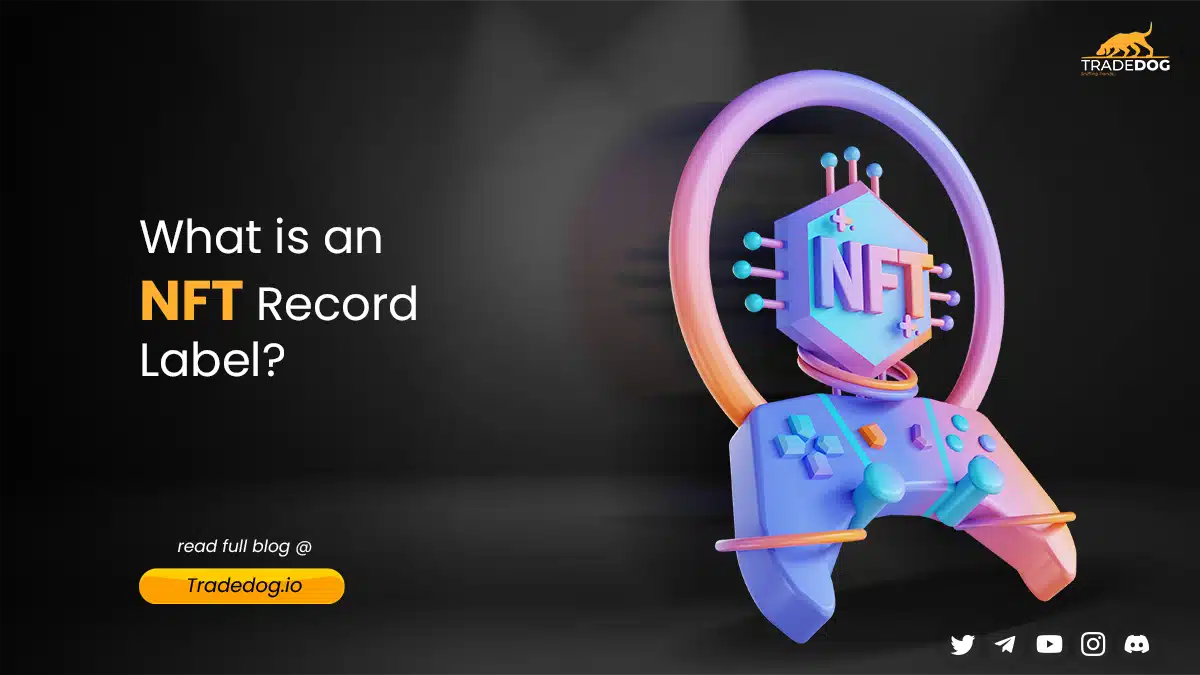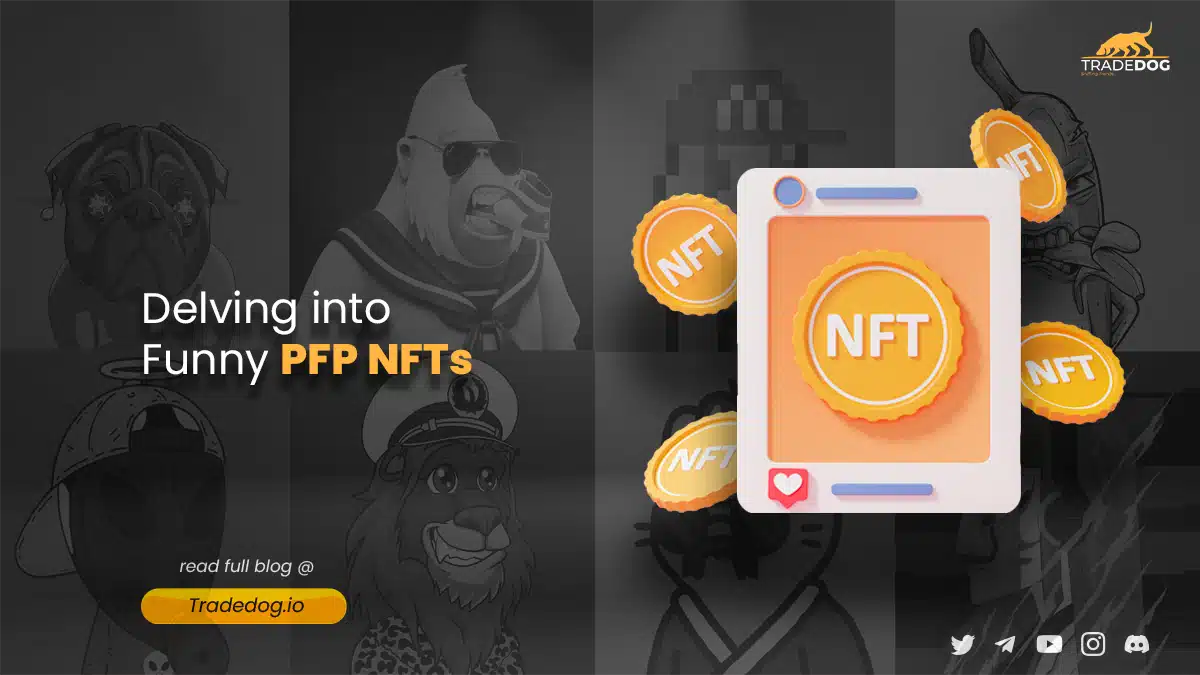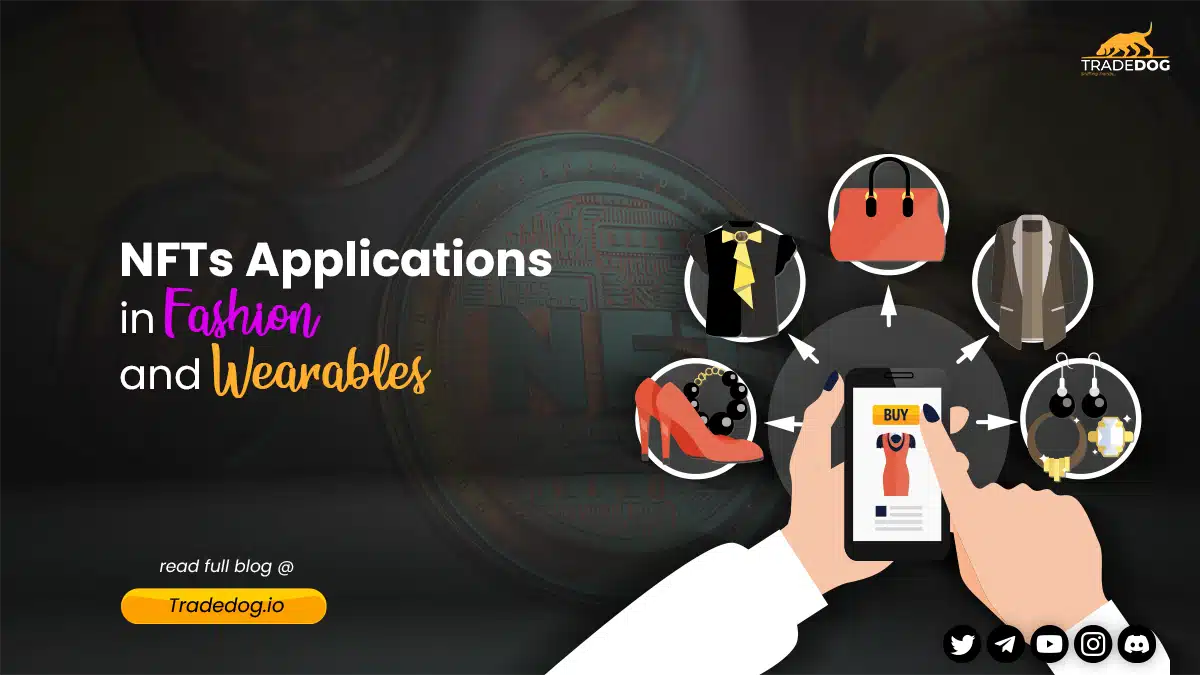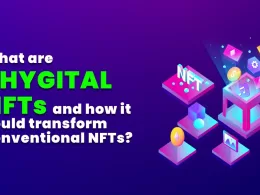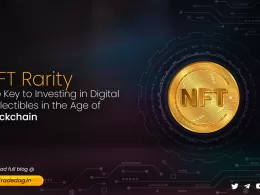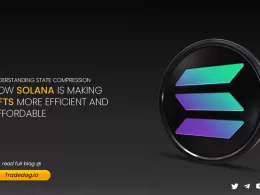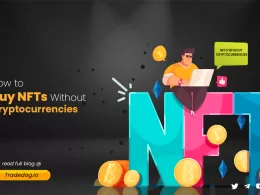Quick Links
Remember when we used to hunt for gifts & treats on Christmas eve around the house? You indeed do and are nostalgic, recalling all the good memories. Treasure hunts have always been fun and a great source of rejuvenation for kids, teens & adults.
We live in a world of Web3 and fun activities like treasure hunts have also turned towards it, wherein you hunt for NFTs that are the rewards within the treasury of blockchain gaming & web3 related projects. Let’s dive deep & understand what is NFT treasure hunt is and why it matters most in current times.
What is an NFT treasure hunt?
An innovative and fun way for people and organizations to share special digital assets and spread the word about their project or brand is through an NFT treasure hunt. Similar to a classic treasure hunt, players must solve puzzles or follow clues to find hidden wealth. For instance, to draw and involve fans of nonfungible tokens, Decentraland has arranged a number of NFT treasure hunts.
In an NFT treasure hunt, players are usually given a variety of tasks or hints to do, frequently spanning several online and physical places. It takes knowledge, creativity, and capacity to comprehend these hints, which might be straightforward or intricate. As players advance in the search, they could receive smaller rewards or get access to special events or material.
Considered a gold mine for big brands, the NFT treasure hunt can be a puzzle, a game, or a hunt in a web3 project. Using the security and transparency of blockchain technology as its underlying infrastructure, NFT treasure hunts can be played by anybody regardless of geographical limitations, making it more accessible for participation. The participants of NFT treasure hunts are generally rewarded with fungible/non-fungible tokens.
Along with being a great way for participants to earn rewards, the NFT treasure hunt is a great marketing and user acquisition tool, helping gamefi and metaverse startups to onboard the masses. As these hunts are strategically planned and require human intelligence and effort to participate and win, the crowd onboarded is essentially organic, not bots/airdrop hunters. As a result, these hunts are considered one of the best practices by NFT and gamefi projects to populate their product and onboard users.
Benefits of NFT Treasure Hunts
Now that we know what essentially is an NFT treasure hunt, let’s dive deeper into its benefits. Whilst being a strategic marketing campaign, NFT hunts over traditional treasure hunts hold several benefits for the project as well as the participants, such as:
Accessibility: Anyone from anywhere can participate in an NFT treasure hunt as long as the participant has an active internet connection on the device. The requirement is just to hold an NFT or even nothing at times, making it a better option for projects to tap when aiming to onboard a mass audience from around the globe.
Scalablity: NFT treasure hunts can accommodate a wide range of participants, and can be arranged by multiple projects build on different blockchain networks. This is yet another benefit of the underlying blockchain technology, leveraged by projects.
Unique Rewards: Unlike traditional hunts, NFT treasure hunts offer exclusive limited collection NFTs & digital tokens. If a GameFi project is hosting a hunt, these NFTs might be in-game assets that can be won and used by the players within the game, ultimately benefiting their gaming experience. On the other hand, tokens won through hunts can be retained as an investment or can be sold in secondary markets for profits.
Verified Ownership: The rewards in NFT treasure hunts are mostly in NFTs that can be easily validated on the blockchain, providing proof of ownership of the real owner.
Community: Hosting an NFT hunt usually takes place on the project’s social media channels, where all the rules and updates are posted regularly. Hence, it acts as a marketing campaign indirectly, helping the project build an organic community on its social media channel.
Creating FOMO: People love the thrill of the hunt, and creating a sense of urgency around a limited-time treasure hunt can create a fear of missing out (FOMO) that drives engagement. This can encourage people to stay engaged with the project even after the treasure hunt is over.
The Underlying Mechanics
The hunt shall be challenging enough, with all the hints spread across the web and an individual must hold one of the NFTs of the project to participate in the treasure hunt. NFT-based treasure hunts are mostly hosted by games running on the blockchain. To create an NFT scavenger hunt, the project essentially needs a collection of minted non-fungible tokens, split tokens/puzzles, or a password.
The project shall ensure to hide/spawn of these items in different locations and provide clues to the community for the hunt. Rules for the hunt shall be pre-defined, explaining the entry, timeline, and actionable to the participants. The projects mostly utilize their public social media channels to promote, instruct, and details on the prizes to the participants.
The participants on the other hand must ensure that they have their crypto wallets setup, up that would store the collectible (NFT). Also, they’re required to constantly follow the rules and updates around the hunt, keeping their participation aligned with the activity.
Examples of Popular NFT Treasure Hunts
The Great NFT Treasure Hunt is a popular NFT project that combines virtual and physical worlds, allowing players to win exclusive NFTs. The project has minted 32 rare NFT artworks on Ethereum Blockchain that are stored in a unique digital wallet. The wallet requires passwords to unlock which are placed in real-world locations (California). The project releases clues on its social media channels hinting at the secret locations of the passwords. The one who manages to collect all the puzzle pieces for the password would grab the ownership rights to the particular wallet that is holding the NFT. This strategy is a great way to engage people through real-world practices and build community on social media channels simultaneously.
Another project named NFT Worlds followed the approach of a Blockchain-based treasure hunt last year when it announced a scavenger hunt. The hunt required participants to identify the twelve letters in a mnemonic seed phrase. The fortunate participants gained access to a wallet that contains 3 ETH and 500,000 $WRLD tokens by finding the correct ones.
The project on its official Twitter account posted that more than 500 concurrent players actively participated in the scavenger hunt. The game supported cross-platform compatibility and was accessible through Xbox, Playstation, Android, and Nintendo. The hunt was concluded within 10 days and the game announced the list of winners via a tweet.
Automobile giant Volkswagen (South Africa) also stepped into the metaverse with an immersive NFT treasure hunt, done in collaboration with Ogilvy South Africa. The new campaign was designed to promote their new car. The “Game On” treasure hunt included 100 NFTs that were included in the Mzansiverse and players was entitled to real-world rewards such as a PS5 & tuition by the Volkswagen Advanced Driving Academy.
How NFT Treasure Hunt can drive engagement and increase interest in a web3 project
Similar to traditional treasure hunts, the NFT treasure hunt is a profitable way of boosting engagement and mass adoption for a web 3 project. Putting up an NFT scavenger hunt benefits the project in many ways and keeps the community interested in the activity for which they are rewarded.
Games and treasure hunts are useful because they amuse users while offering the chance to earn a prize. Even if they don’t win, customers will remember the NFT scavenger hunt positively, which will enhance the brand’s perception in their subconscious. The latter will be connected to the excitement of playing, which will increase user engagement and ultimately lead to conversion.
By offering digital assets as rewards to the participants, NFT treasure hunts are considered a good opportunity to tap new audience as well as the inactive community as it involves engagement on a personal level such as searching for NFTs within the game, collecting hints and puzzle pieces, exploring social media channels for the clues, etc. By making the experience more immersive and interactive through the NFT treasure hunt, a project can ultimately benefit in driving engagement & attract interest from the community.
Conclusion
NFT treasure hunts are one of the best techniques for web3-based NFT, GameFi, and metaverse startups to attract eyeballs and maximize footfall on their platforms. On the other hand, players get to win exclusive NFTs, crypto tokens, and other digital assets.
Although there are some risks associated with NFT scavenger hunts such as Ponzi or fraud projects hosting such events where participants deploy their resources and get nothing. Technical issues and glitches might also be major problems in such events as these are hosted online and can face network issues. Alongside, the rewards in cryptocurrencies are very volatile in the true sense and might lose their value over time if the markets turn bad.
Hence, the participants must consider all such points before actively participating in NFT treasure hunts. If conducted successfully, NFT treasure hunts are the best possible way to populate a Web 3 project, generate buzz, and drive massive ‘real’ adoption in no time.





